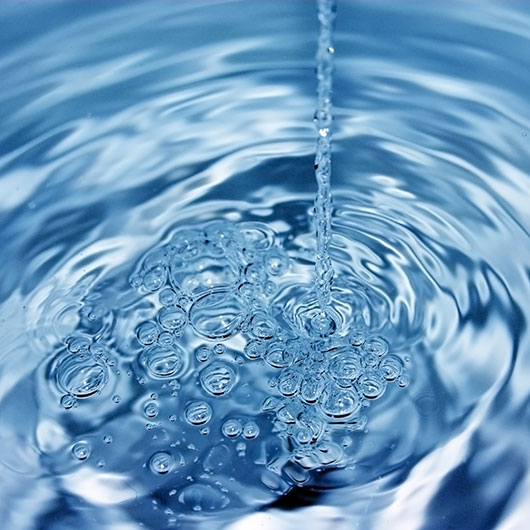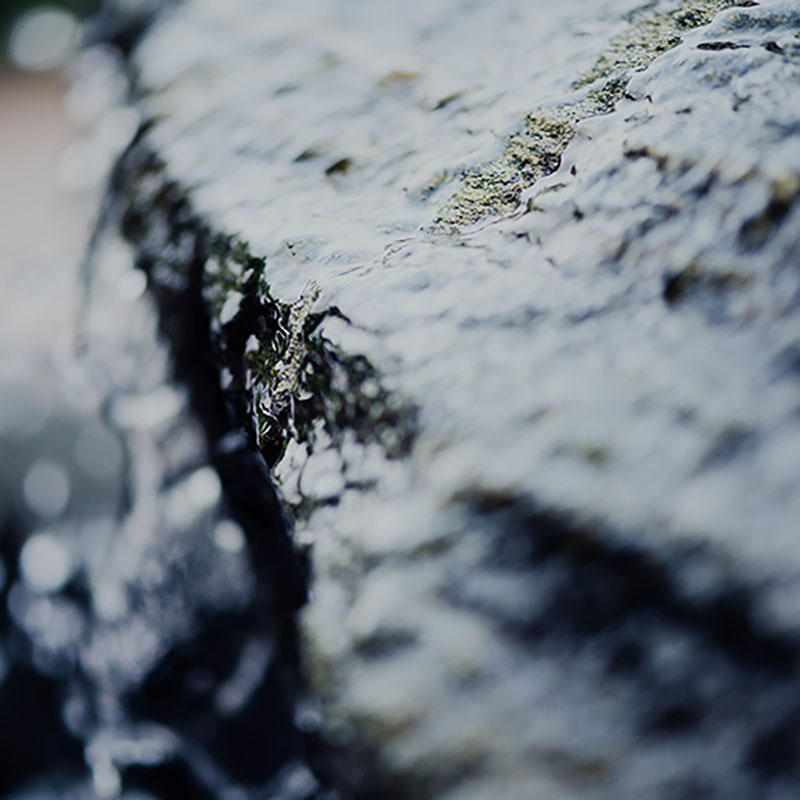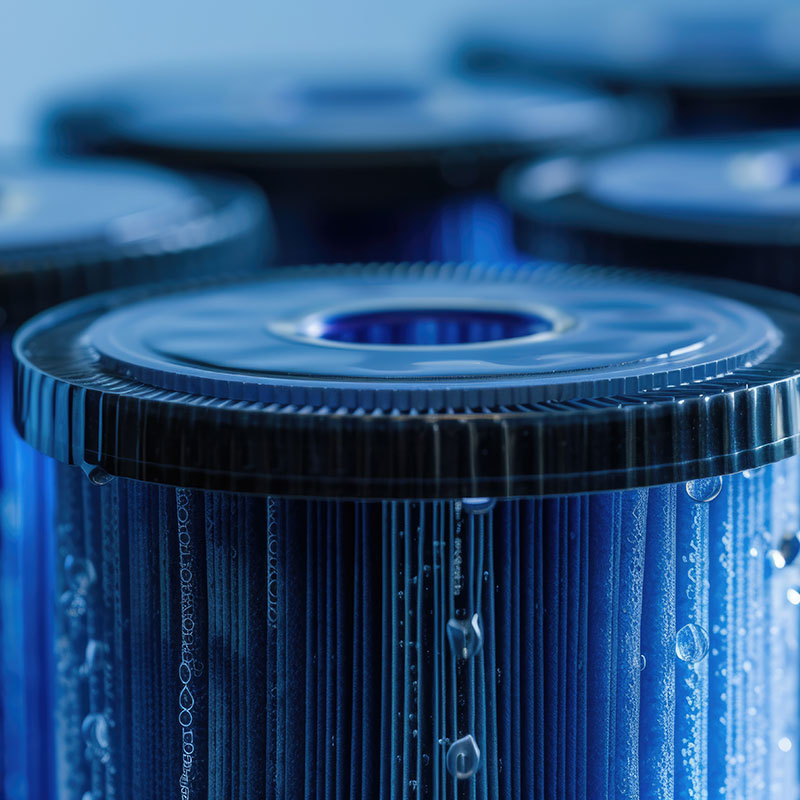Well Owner Lessons

Introduction
Owning a private well gives you access to fresh, natural water—but it also comes with the responsibility of ensuring its safety and quality.
Unlike municipal water systems, private wells are not regulated, meaning well owners must take proactive steps to protect their water supply.
At First Responder Water Treatment, we’re here to help you navigate the challenges of well ownership.
Whether you’re learning how to test your water, choose the right filtration system, or prevent common issues like contamination and equipment failure, our expert guides provide the knowledge you need to keep your well water clean, safe, and dependable.
Explore our well owner lessons to gain valuable insights, practical tips, and step-by-step solutions for maintaining your well—and ensuring your household has access to high-quality water year-round.

Well Water: What You Need to Know
Well water is naturally obtained from the ground through a drilled hole up to an underground water source, called an aquifer.
Municipal water is treated and supplied to the public, while well water is drawn directly from the ground and generally doesn’t have chemicals like chlorine or fluoride added to it.
Well water is obtained from natural underground reservoirs which are affected by natural factors like rain, soil, and nearby agriculture or industry.
This is why it is necessary to check on it from time to time.
Checking for contaminants such as bacteria, heavy metals, and nitrates is done to avoid health issues that may be associated with the water and to ensure that the water is safe for use.
This paper aims at exploring the specifics of well water, its advantages and disadvantages, and the need for regular service.
This knowledge of the specialities of well water, the advantages and disadvantages of this type of water and the need for regular service can assist homeowners in making the right decisions concerning their water supply and health.

Common Well Water Issues and How to Address Them
While having a private well provides access to fresh groundwater, it also comes with the responsibility of ensuring that your water remains clean, safe, and free from issues that can affect your health, plumbing, and appliances. Below are some of the most common problems well owners face, along with insights on how to identify and resolve them.
1. Hard Water and Mineral Buildup
Hard water contains high levels of calcium and magnesium, which can lead to mineral buildup in pipes, water heaters, and household appliances. Over time, this buildup can reduce water flow, increase energy costs, and leave spots on dishes and glassware.
- Signs: White, chalky deposits on faucets, clogged showerheads, soap scum in sinks and bathtubs.
- Solution: Installing a water softener can help remove excess minerals and prevent scale buildup.
2. Bacterial Contamination and Waterborne Illnesses
Wells can become contaminated with bacteria such as E. coli and coliform bacteria, which can pose serious health risks. Contamination can occur due to surface water infiltration, nearby septic systems, or animal activity.
- Signs: Gastrointestinal issues, an unpleasant taste or odor, or a slimy film in pipes.
- Solution: Regular well water testing, shock chlorination, and the use of a UV purification system can help eliminate bacteria and ensure safe drinking water.
3. Sulfur Smells and Iron Stains
If your well water has a rotten egg smell or leaves reddish-brown stains on sinks, bathtubs, and laundry, it may contain high levels of sulfur and iron.
- Signs: Foul-smelling water, rust-colored stains on fixtures, and metallic-tasting water.
- Solution: Installing an iron and sulfur filter or an aeration system can help remove these contaminants and improve water quality.
4. pH Imbalance and Water Acidity
Well water with a low pH (acidic water) can be corrosive, potentially damaging plumbing systems and leaching metals such as lead and copper into your water supply.
- Signs: Greenish-blue stains on sinks, corroded pipes, and a metallic taste.
- Solution: Using a pH neutralizer, such as a calcite or soda ash system, can help balance water acidity and protect your plumbing.
5. Sediment and Particulate Issues
Sand, silt, and other particles can enter well water due to natural erosion or problems with the well casing or pump. Excess sediment can clog plumbing fixtures and damage appliances.
- Signs: Cloudy or gritty water, sediment buildup in water heaters, and clogged faucet aerators.
- Solution: Installing a sediment filter or flushing your well can help reduce particulates and keep your water clean.
Ensuring Clean and Safe Well Water
Regular testing and proper filtration can help prevent common well water issues and protect your household from water quality concerns. If you’re experiencing any of these problems, consider consulting a water treatment specialist to find the best solution for your well.

Testing Well Water
Testing your well water regularly is crucial to ensure that your drinking water is safe and clean.
Being that private wells don’t undergo the same regulations and treatments as municipal water systems, it is up to homeowners to monitor water quality.
Regular testing helps detect harmful substances that could affect health and ensures the water remains safe for everyday use.
How Often Should You Test?
Health professionals recommend testing well water for bacteria, nitrates, and other common pollutants at least once a year. However, additional testing may be required under specific circumstances, such as:
- The well is situated near agricultural or industrial zones.
- There are unexplained health issues in the household that could be linked to water quality.
Common Contaminants in Well Water
Well water may contain impurities from both natural sources and human activities. Common contaminants include:
- Bacteria & Viruses – E. coli and coliform bacteria can cause illnesses.
- Nitrates & Nitrites – Often linked to agricultural runoff, these can be particularly dangerous for infants if present in high concentrations.
- Pesticides & Chemicals – Agricultural and household chemicals can seep into the water supply.
- Hard Water Minerals – Excessive calcium and magnesium can lead to scaling in pipes and appliances.
Where to Get Well Water Tested
You can access well water testing services from the following sources:
- State-Certified Laboratories – Accredited labs offer comprehensive analyses and expert guidance.
- Private Water Testing Companies – Companies specializing in well water analysis provide advanced testing for specific contaminants.
For homeowners who want to conduct an initial check, home water test kits are available. However, for precise and comprehensive results, professional testing services are recommended. Regular testing ensures peace of mind and helps prevent potential health risks before they become serious concerns.

Well Water Treatment Solutions
Ensuring that your well water is safe for drinking and free from harmful substances is essential for maintaining good health and protecting your plumbing system.
Since well water originates from underground reservoirs, it can pick up minerals, bacteria, and other contaminants that impact its purity.
Fortunately, there are various methods to treat well water and ensure it meets safety standards effectively.
Water Softeners – Minimizing Hardness and Scaling
Hard water contains high levels of calcium and magnesium, which can lead to scale buildup in plumbing systems, appliances, and household fixtures.
Over time, this accumulation can decrease water pressure, cause damage to appliances, and leave unsightly marks on dishes and glassware.
- Solution: Water softeners use an ion exchange mechanism to remove calcium and magnesium ions, preventing scale buildup and enhancing the efficiency of water heaters, dishwashers, and washing machines.
- Benefits: Softened water prolongs the lifespan of plumbing systems, reduces soap residue, and improves the effectiveness of soaps and detergents.
Reverse Osmosis Systems – Removing Heavy Metals and Contaminants
Well water may contain harmful substances such as lead, mercury, pesticides, and nitrates, which can pose significant health risks.
- Solution: Reverse osmosis (RO) systems use a semipermeable membrane to filter out heavy metals and contaminants at the molecular level.
- Benefits: RO systems provide high-quality, purified water for drinking and cooking, improving both safety and taste.
UV Purification – Eliminating Bacteria and Viruses
Many well water users worry about microbial contamination, as bacteria, viruses, and protozoa can lead to serious health issues.
- Solution: UV purification systems use ultraviolet light to destroy harmful microorganisms without the need for chemicals.
- Benefits: This chemical-free method ensures safe drinking water while preserving its natural taste and odor.
Iron and Sulfur Filters – Addressing Odors and Metallic Taste
Many wells have high levels of iron and sulfur, leading to several issues, such as:
- A metallic taste in drinking water.
- Rust stains on sinks, bathtubs, and laundry.
- A strong, unpleasant rotten egg odor from hydrogen sulfide gas.
- Solution: Iron and sulfur filters use oxidation and specialized filtration media to remove these contaminants and restore water quality.
- Benefits: This improves the taste, smell, and clarity of water while preventing stains and damage to household fixtures.
Whole-House Filtration Options
Each household has unique water treatment needs, and a combination of filtration systems may be the most effective solution.
- Solution: Whole-house filtration systems integrate multiple technologies—such as sediment filters, activated carbon filters, and UV purification—to provide comprehensive water treatment.
- Benefits: These systems ensure clean and safe water throughout the home, improving drinking water quality, protecting appliances, and optimizing overall household water use.
Choosing the Right Well Water Treatment System
Determining the best water treatment solution depends on the specific contaminants present in your well water.
A professional water analysis can help identify problems and guide you in selecting the right filtration system for your home. Regular maintenance is also crucial to ensuring long-term efficiency and water quality.
By investing in the right well water treatment solution, homeowners can enjoy clean, safe, and great-tasting water while safeguarding their plumbing systems and appliances from damage.

Well Maintenance and Best Practices
Having a well maintained well is very important in order to provide your home with clean and safe water.
Since private wells are not subject to regulation like municipal water systems, it is the homeowner who is responsible for the condition of the well.
Routine checks, analyses and preventive measures would help to increase the lifespan of your well, avoid expensive repairs and would ensure that your water is safe for consumption.
1. Regular Well Inspections
Well inspections on a regular basis help to identify potential problems before they become major problems.
It is recommended that you get your well checked at least once a year to make sure there are no problems and that the well is clean and free of contaminants.
Key Areas to Inspect:
- Well Cap and Casing: Check that the well cover is well plugged to avoid any objects, insects or even animals to be deposited into the well.
- Visible Leaks or Corrosion: Look for any cracks, rust or any other form of damage to the casing and well components.
- Pump Performance: Listen for unusual noises or pressure fluctuations, which may indicate pump issues.
- Drainage Around the Well: Make sure that the ground does not have any accumulation of water nearby the well which may contain contaminants.
If you notice any damage or irregularities, please contact a professional well inspector to come and check and fix the problem.
2. Routine Water Testing
To ensure that the well water is good for drinking and other household uses it has to be tested from time to time.
The quality of water may change with time, due to natural causes, seasons, or usage of the surrounding land.
Recommended Testing Frequency:
- Annually: Test for bacteria (E. coli, coliform), nitrates, and pH levels.
- Every 3-5 Years: Test for heavy metals (lead, arsenic, iron), pesticides, and other chemical contaminants.
- After Environmental Events: In case of flooding, construction or agricultural activity nearby test the water immediately.
Homeowners can use at-home test kits for basic assessments, but professional water testing is recommended for a more comprehensive analysis.
3. Recognizing Common Well Problems
This article helps you identify the signs of well problems in order to avoid serious consequences and expensive repairs.
Signs of Well Water Problems:
- Sudden Drop in Water Pressure: It could be a sign of a failing pump, blocked pipes or low water levels.
- Cloudy or Discolored Water: Caused by sediment, rust or any other contamination.
- Unpleasant Odor or Taste: If you smell sulfur (it smells like rotten eggs), taste metal, or there is a strong chemical odor, then there may be contamination.
- Increased Utility Bills: If the well pump is malfunctioning, it may be running constantly, thus increasing the energy bill.
- Strange Noises from the Pump: Clicking, grinding or humming suggests that there is a problem with the machinery.
If you notice any of these symptoms, it’s best to call a professional well technician for an inspection.
4. Preventative Maintenance Best Practices
Well Protection:
- Do not introduce Toxic substances (pesticides, fertilizers, motor oil) into your well to avoid contamination.
- There should be no proximity between the well and the septic systems, livestock and fuel storage.
- It is recommended that trees and shrubs should not be planted too close to the well as the roots can damage the well casing.
Pump and Plumbing Care:
- Have the well pump serviced at regular intervals to avoid breakdowns.
- To check for pressure tank levels to ensure that there is a constant flow of water.
- In cold climates, it is advisable to insulate the pipes to prevent them from freezing and breaking.
Water Conservation Tips:
- Try to space out the use of water in large quantities (washing, watering the garden etc.) in order not to put a lot of stress on the well.
- Repair leaks in the household plumbing to prevent wastage of water.
- Low-flow devices should be installed to help keep the levels of water in the well constant.
5. When to Call a Professional
There are some well problems that only a professional well specialist can tackle while others can be handled by homeowners.
Call a Professional If You Experience:
- Recurrent water problems such as contamination, color, or smell.
- Low or fluctuating water pressure.
- Pump failure or electrical problems.
- Any damage to the well structure or the well cover.
- Major well system renovations or new well installation.
Hiring a licensed well contractor guarantees that the diagnosis, repair and maintenance work that is to be done is done so properly and safely.
Well water is an important source of water supply and thus it has to be well maintained to last long and be safe.
By performing regular inspections, annual water testing and following the preventive measures, homeowners can avoid the chances of their wells getting contaminated, break down or need expensive repairs.
If any issues arise, early detection and professional intervention can help keep your well in optimal condition for years to come.

List of Common Questions
Owning a well gives you access to fresh, natural water, but it also comes with the responsibility of ensuring water quality and safety.
Below are answers to some frequently asked questions that homeowners have about well water.
1. How can I determine if my well water is safe for consumption?
The best way to ensure your well water is safe is through regular testing.
Even if the water looks clean and tastes fine, it may contain hidden contaminants such as bacteria, nitrates, or chemicals. Experts recommend the following testing schedule:
- Annually: Test for bacteria (E. coli, coliform), nitrates, and pH levels.
- Every 3-5 years: Test for heavy metals, pesticides, and other chemical contaminants.
If you’re unsure where to start, reach out to a local water testing facility or your county’s health department for guidance.
2. What should I do if my water tastes or smells strange?
Unusual tastes or odors in your well water may indicate the presence of contaminants or naturally occurring minerals. Common issues include:
- Rotten egg smell (sulfur): Often caused by hydrogen sulfide gas or sulfur bacteria.
- Metallic taste: May indicate high levels of iron, manganese, or other heavy metals.
- Chemical or chlorine-like smell: Could be due to industrial pollution or runoff.
- Earthy or musty taste: Often caused by algae, organic matter, or decaying leaves in the well.
Solution: Conduct a water quality test to identify the cause. Depending on the issue, you may need to install a filtration or purification system.
3. Can I install a water filtration system myself?
It depends on the system. Some basic filtration units, such as under-sink reverse osmosis systems or activated carbon filters, can be installed by homeowners with basic plumbing knowledge. However, more complex systems, such as:
- Whole-house filtration systems
- Water softeners
- UV water purification systems
If you’re uncertain, consulting a water treatment specialist can help you determine the best system for your specific water concerns.
4. How frequently should I test my well water?
Regular water testing is essential for maintaining safe drinking water. A general guideline is:
- At least once a year: Test for bacteria, nitrates, and pH levels.
- Every 3-5 years: Check for heavy metals, pesticides, and other contaminants.
- Immediately after major events: If you experience flooding, construction nearby, or sudden changes in water quality, test your water as soon as possible.
While home water testing kits are available, a certified laboratory test provides the most accurate results.
5. What are the risks of not treating well water?
Untreated well water can lead to several health and household issues, including:
- Health Hazards: Bacteria, viruses, and harmful chemicals can cause serious illnesses.
- Plumbing Damage: Hard water minerals like calcium and magnesium can lead to scaling, reducing the lifespan of pipes and appliances.
- Bad Taste and Odor: Contaminants like sulfur, iron, and chlorine can make water unpleasant to drink.
- Staining: Iron and manganese can cause rust-colored stains on sinks, bathtubs, and laundry.
Solution: Installing a water treatment system can help remove contaminants and improve overall water quality.
Still Have Questions?
If you have more questions about well water safety and maintenance, don’t hesitate to contact us. Keeping your well water clean and safe is essential for your family’s health and home maintenance.